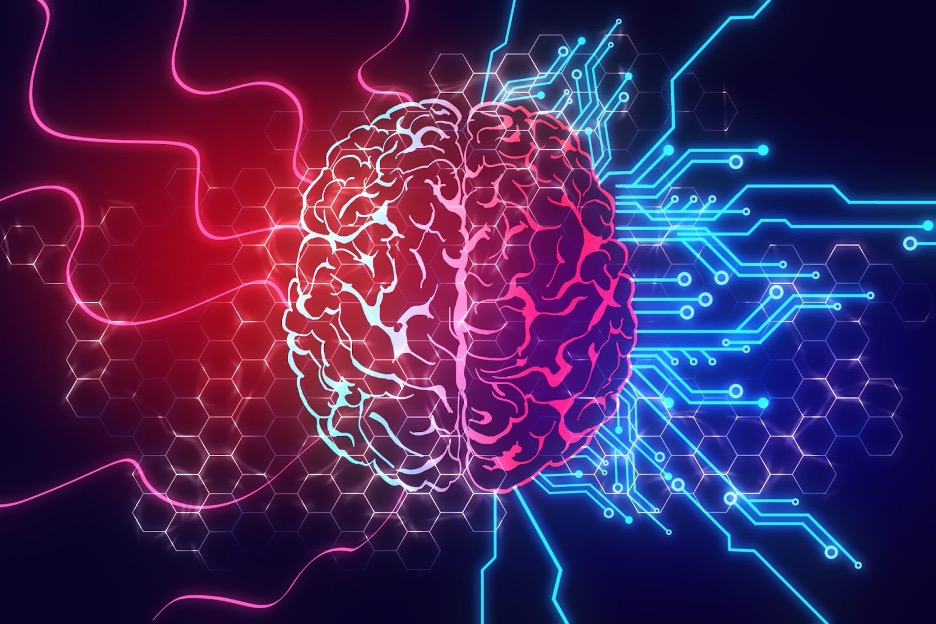Introduction to Machine Learning: What is the Introduction to Machine Learning?
AI instructional exercise gives essential and high level ideas of AI. Students and professionals in the workforce can benefit from our machine learning tutorial.
A rapidly developing field of technology, machine learning allows computers to automatically learn from previous data. For building mathematical models and making predictions based on historical data or information, machine learning employs a variety of algorithms. Right now, it is being utilized for different undertakings, for example, picture acknowledgment, discourse acknowledgment, email sifting, Facebook auto-labeling, recommender framework, and some more.
This AI instructional exercise gives you a prologue to AI alongside the extensive variety of AI strategies, for example, Directed, Unaided, and Support learning. You will find out about relapse and grouping models, bunching strategies, stowed away Markov models, and different successive models.
What is AI
In reality, we are encircled by people who can gain everything from their encounters with their learning capacity, and we have PCs or machines which work on our directions. In any case, might a machine at any point likewise gain from encounters or past information like a human does? So here comes the job of AI.
A subset of artificial intelligence known as machine learning focuses primarily on the creation of algorithms that enable a computer to independently learn from data and previous experiences. The term AI was first presented by Arthur Samuel in 1959. We can characterize it in a summed up manner as:
AI empowers a machine to naturally gain from information, further develop execution from encounters, and foresee things without being expressly modified.
With the assistance of test verifiable information, which is known as preparing information, AI calculations construct a numerical model that aides in settling on expectations or choices without being expressly customized. For the purpose of developing predictive models, machine learning brings together statistics and computer science. Algorithms that learn from historical data are either constructed or utilized in machine learning. The performance will rise in proportion to the quantity of information we provide.
A machine can learn whether it can gain more data to improve its performance.
How does machine learning work? A machine learning system builds prediction models, learns from past data, and predicts the output of new data whenever it receives it. The amount of data helps to build a better model that accurately predicts the output, which in turn affects the accuracy of the predicted output.
Let’s say we have a complex problem in which we need to make predictions. Instead of writing code, we just need to feed the data to generic algorithms, which build the logic based on the data and predict the output. Our perspective on the issue has changed as a result of machine learning. The Machine Learning algorithm’s operation is depicted in the following block diagram:
Highlights of AI:
Data are used by machine learning to find various patterns in a given dataset.
It can gain from past information and improve naturally.
It is an information driven innovation.
AI is much like information mining as it additionally manages the enormous measure of the information.
Need for AI
The requirement for AI is expanding step by step. The purpose for the requirement for AI is that it can do undertakings that are excessively intricate for an individual to straightforwardly execute. Humans are constrained by our inability to manually access vast amounts of data; as a result, we require computer systems, which is where machine learning comes in to simplify our lives.
By providing them with a large amount of data and allowing them to automatically explore the data, build models, and predict the required output, we can train machine learning algorithms. The cost function can be used to determine the amount of data and the machine learning algorithm’s performance. With the assistance of AI, we can set aside both time and cash.
Currently, machine learning is utilized in self-driving cars, cyber fraud detection, face recognition, and Facebook friend suggestion, among other applications. This demonstrates the significance of machine learning. Different top organizations, for example, Netflix and Amazon have fabricate AI models that are utilizing a tremendous measure of information to dissect the client interest and suggest item as needs be.
The following are some important points that demonstrate the significance of machine learning:
Rapid growth in the production of data: tackling difficult-to-solve problems, making decisions in a variety of fields, including finance, finding hidden patterns, and extracting useful information from data.
Classification of Machine Learning Machine learning can be broken down into three broad categories:
Directed learning
Unaided learning
Support learning
1) Directed Learning
Regulated learning is a sort of AI strategy where we give test marked information to the AI framework to prepare it, and on that premise, it predicts the result.
The system uses labeled data to build a model that understands the datasets and learns about each one. After the training and processing are done, we test the model with sample data to see if it can accurately predict the output.
The mapping of the input data to the output data is the objective of supervised learning. Similar to how a student learns under the guidance of a teacher, supervised learning is based on supervision. Spam filtering is an example of supervised learning.
Directed learning can be assembled further in two classes of calculations:
2) Unsupervised Learning Unsupervised learning is a method of learning in which a machine learns without human oversight.
The preparation is furnished to the machine with the arrangement of information that has not been marked, characterized, or sorted, and the calculation needs to follow up on that information with next to no oversight. The objective of unaided learning is to rebuild the information into new elements or a gathering of items with comparative examples.
In unaided learning, we don’t have a foreordained outcome. The machine attempts to track down helpful bits of knowledge from the colossal measure of information. It can further be divided into two algorithms categories:
3) Reinforcement Learning Reinforcement learning is a feedback-based learning method in which a learning agent receives a penalty for each wrong action and a reward for each right action. The specialist advances consequently with these inputs and works on its presentation. The agent explores and interacts with the environment in reinforcement learning. The objective of a specialist is to get the most prize focuses, and thus, it works on its presentation.
The history of machine learning Machine learning used to be something out of science fiction, but it is now a part of our everyday lives. From self-driving cars to the virtual assistant “Alexa” from Amazon, machine learning is simplifying our day-to-day lives. Notwithstanding, the thought behind AI is so old and has a long history. The following are some significant events in the history of machine learning:
The early history of AI (Pre-1940):
1834: Charles Babbage, the inventor of the computer, designed a punch card-programmable device in 1834. Notwithstanding, the machine was rarely assembled, however all cutting edge PCs depend on its coherent construction.
1936: In 1936, Alan Turing gave a hypothesis that how a machine can decide and execute a bunch of directions.
The time of put away program PCs:
1940: “ENIAC,” the first electronic general-purpose computer, was created in 1940 as the first manually operated computer. After that put away program PC, for example, EDSAC in 1949 and EDVAC in 1951 were designed.
1943: An electrical circuit was used to create a model of a human neural network in 1943. In 1950, the researchers began investigating how human neurons might function and putting their concept into practice.
Intelligence and machinery in computers:
1950: Alan Turing wrote a groundbreaking paper on artificial intelligence in 1950 called “Computer Machinery and Intelligence.” He asked, “Can machines think?” in his paper.
Games with machine intelligence:
1952: Arthur Samuel, who was the trailblazer of AI, made a program that helped an IBM PC to play a checkers game. The more it played, the better it did.
1959: In 1959, the expression “AI” was first authored by Arthur Samuel.
The first “Artificial intelligence” winter:
The term of 1974 to 1980 was the difficult stretch for man-made intelligence and ML analysts, and this span was called as computer based intelligence winter.
In this term, disappointment of machine interpretation happened, and individuals had decreased their advantage from man-made intelligence, which prompted diminished subsidizing by the public authority to the explores.
1959: From theory to practice in machine learning The first neural network was used to solve a real-world problem in 1959 to use an adaptive filter to get rid of echoes over phone lines.
1985: In 1985, Terry Sejnowski and Charles Rosenberg concocted a brain network NETtalk, which had the option to show itself how to articulate 20,000 words in a single week accurately.
1997: The IBM Deep Blue intelligent computer defeated chess master Garry Kasparov to win the game, making it the first computer to defeat a human chess master.
2006: Machine Learning in the 21st Century In the year 2006, PC researcher Geoffrey Hinton has given another name to brain net examination as “profound learning,” and these days, it has become one of the most moving advancements.
2012: Google developed a deep neural network in 2012 that was able to recognize human and cat images in YouTube videos.
2014: In 2014, the Chabot “Eugen Goostman” cleared the Turing Test. It was the main Chabot who persuaded the 33% of human adjudicators that it was anything but a machine.
2014: Facebook’s DeepFace was a deep neural network that they claimed could recognize a person with the same accuracy as a human.
2016: AlphaGo defeated Lee Sedol, the second-ranked Go player in the world. In 2017 it beat the main player of this game Ke Jie.
2017: In 2017, the Letters in order’s Jigsaw group constructed a wise framework that had the option to get familiar with the web based savaging. In order to learn how to stop online trolling, it used to read millions of comments on various websites.
At this time, Machine Learning:
Presently AI has an extraordinary headway in its exploration, and it is available wherever around us, like self-driving vehicles, Amazon Alexa, Catboats, recommender framework, and some more. It incorporates clustering, classification, decision tree, SVM algorithms, and reinforcement learning, as well as unsupervised and supervised learning.
It is possible to use modern machine learning models to make a variety of predictions, such as those regarding the weather, diseases, stock market analysis, and so on.
Prerequisites In order to easily comprehend machine learning’s concepts, you must possess the following fundamental knowledge prior to learning machine learning:
a fundamental understanding of linear algebra and probability.
the capacity to code in any programming language, particularly Python.
Information on Analytics, particularly subordinates of single variable and multivariate capabilities.


